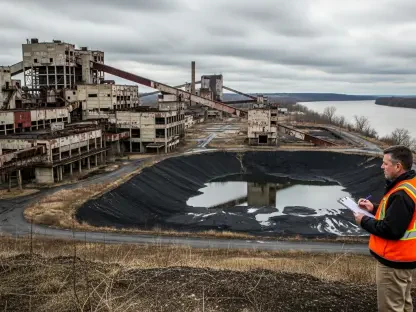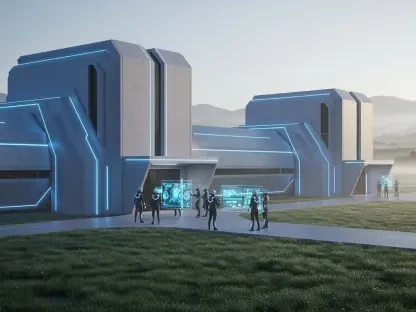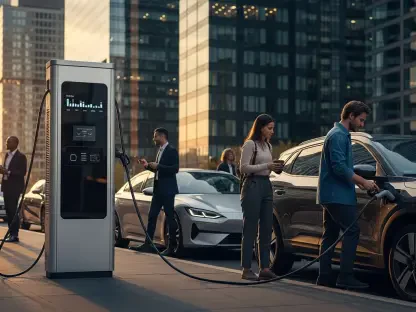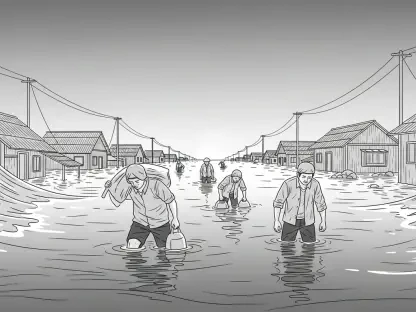In the heart of Brazil, a nation that powers over 80% of its electricity grid with renewable sources like hydroelectric, wind, and solar, a perplexing contradiction smolders as coal-fired plants, relics of a dirtier energy era, still burn brightly in towns like Candiota, casting a shadow over the country’s green reputation. How can a global leader in clean energy, hosting major climate summits, remain tethered to one of the most polluting fuels? This paradox demands exploration, pulling back the curtain on economic dependencies, political maneuvers, and systemic gaps that keep coal alive in a land poised for a fossil-free horizon.
The Stubborn Shadow in Brazil’s Green Legacy
Amidst Brazil’s sprawling rainforests and sun-soaked plains, the nation’s energy profile stands as a beacon of sustainability. Yet, beneath this glowing facade, coal plants like the one in Candiota churn out power and pollution, defying the logic of a country so rich in renewable resources. This isn’t just a minor glitch; it’s a stark reminder that even champions of clean energy face formidable hurdles in fully shedding fossil fuels. The persistence of coal in Brazil isn’t merely a technical issue—it’s a story of people, politics, and priorities clashing with environmental ideals.
The significance of this issue cannot be overstated. As a leader in Latin America’s renewable energy transition, Brazil’s inability to fully phase out coal sends ripples globally, especially when the nation positions itself as a climate advocate. This lingering reliance raises critical questions about the feasibility of complete decarbonization, even for countries with vast clean energy potential. It’s a tale that intertwines local livelihoods with international expectations, revealing the messy underbelly of a sustainable future.
Economic Lifelines Tied to Coal’s Survival
In the southern mining town of Candiota, coal isn’t just fuel—it’s the lifeblood of an entire community. The local plant, operated by Ambar, sustains around 10,000 jobs, from direct employment at the facility to roles in nearby mines and cement factories that repurpose coal ash. For many families, shutting down this operation isn’t an abstract environmental win; it’s a direct threat to their daily survival, creating a tension that overshadows broader climate goals.
This economic anchor creates a formidable barrier to change. Workers in the region, dependent on steady paychecks, view coal as their only certainty in an uncertain transition. The immediate hardship of plant closures looms larger than the distant promise of green jobs, making it clear that any move away from coal must address these human costs head-on. Without viable alternatives, the community remains locked in a cycle of dependency.
Political Currents Fueling Coal’s Endurance
Beyond economics, the coal industry wields significant political clout in Brazil’s mining states. A powerful lobby has successfully pushed for policies that extend the life of coal plants, with recent legislative efforts aiming to secure contracts for facilities like Candiota until 2040. This influence persists despite abundant renewable options, highlighting how entrenched interests can delay progress toward cleaner energy systems.
Critics argue that strategic moves by business magnates, who have acquired coal assets in anticipation of favorable policies, further entrench this fossil fuel’s presence. Such dynamics reveal a deeper challenge: energy decisions are often shaped more by political power plays than by environmental imperatives. This tug-of-war between industry influence and climate commitments complicates Brazil’s path to a coal-free future.
Energy Security or Convenient Excuse?
The Brazilian government and industry stakeholders often justify coal’s role by citing energy security. The Candiota plant, reactivated after significant investment, now serves peak demand on the spot market, stepping in when renewable sources like solar and wind falter. Proponents argue that thermal options, including coal, provide a necessary buffer to maintain grid stability as the nation integrates more clean energy.
However, energy experts challenge this rationale, pointing out that coal plants lack the flexibility for rapid response compared to other thermal alternatives. They suggest that the real issue lies in inadequate planning and infrastructure, which leave vast renewable potential untapped. This reliance on coal as a fallback, despite its higher costs and environmental impact, exposes systemic flaws in balancing reliability with sustainability.
Voices of Struggle and Hope from the Ground
From the dusty streets of Candiota, raw emotions surface about coal’s role in daily life. Graca dos Santos, a former plant worker, voices a common fear: “What will happen to us if this shuts down?” This sentiment echoes across the community, where the specter of job loss looms large, drowning out discussions of carbon footprints and climate targets.
Union leaders like Hermelindo Ferreira straddle a delicate line, advocating for job preservation while urging workers to retrain for roles in emerging sectors like wind energy maintenance. Meanwhile, analysts critique the government’s stance on coal as a crutch for grid stability, arguing it reflects shortsighted planning. These diverse perspectives paint a vivid picture of a nation grappling with the human side of an energy transition, caught between immediate needs and global responsibilities.
Charting a Path Beyond Coal’s Grip
Breaking free from coal requires a multifaceted strategy that prioritizes both people and the planet. A just transition framework, backed by government funding, could support communities like Candiota by offering retraining programs in renewable industries or alternative sectors such as beef or wine production, as suggested by local cooperative founder Joao Camargo. Such initiatives would cushion the economic blow of plant closures.
Investing in renewable infrastructure is equally critical. Expanding transmission lines and storage solutions could unlock Brazil’s untapped solar and wind potential, reducing the need for coal during peak demand. Additionally, policy reforms to curb industry lobbying, coupled with public campaigns showcasing the job creation potential of clean energy, could shift political momentum toward sustainability.
Engaging local stakeholders remains a cornerstone of this shift. By involving workers, unions, and residents in planning, trust can be built, and fears addressed. Pilot programs in coal towns, testing alternative employment models, could serve as blueprints for a nationwide transition, ensuring that no community is left behind in the march toward a greener Brazil.
Reflecting on a Journey Yet Unfinished
Looking back, the struggle to dislodge coal from Brazil’s energy mix revealed a nation at a pivotal crossroads. The clash between economic realities in towns like Candiota and the urgent need for decarbonization exposed deep-rooted challenges that even renewable leaders faced. It became evident that technology alone couldn’t erase coal’s footprint; human and political dimensions demanded equal attention.
Moving forward, actionable steps emerged as vital. Crafting robust transition plans for affected communities, bolstering grid infrastructure to maximize clean energy, and curbing fossil fuel lobbying stood out as immediate priorities. Only through such concerted efforts could Brazil hope to align its energy reality with its green aspirations, setting a precedent for others navigating the rocky path to sustainability.









